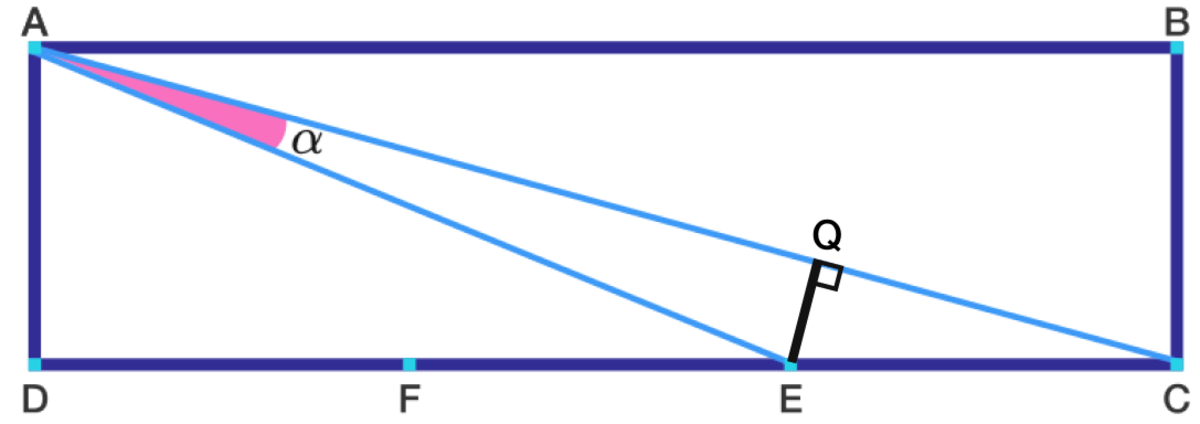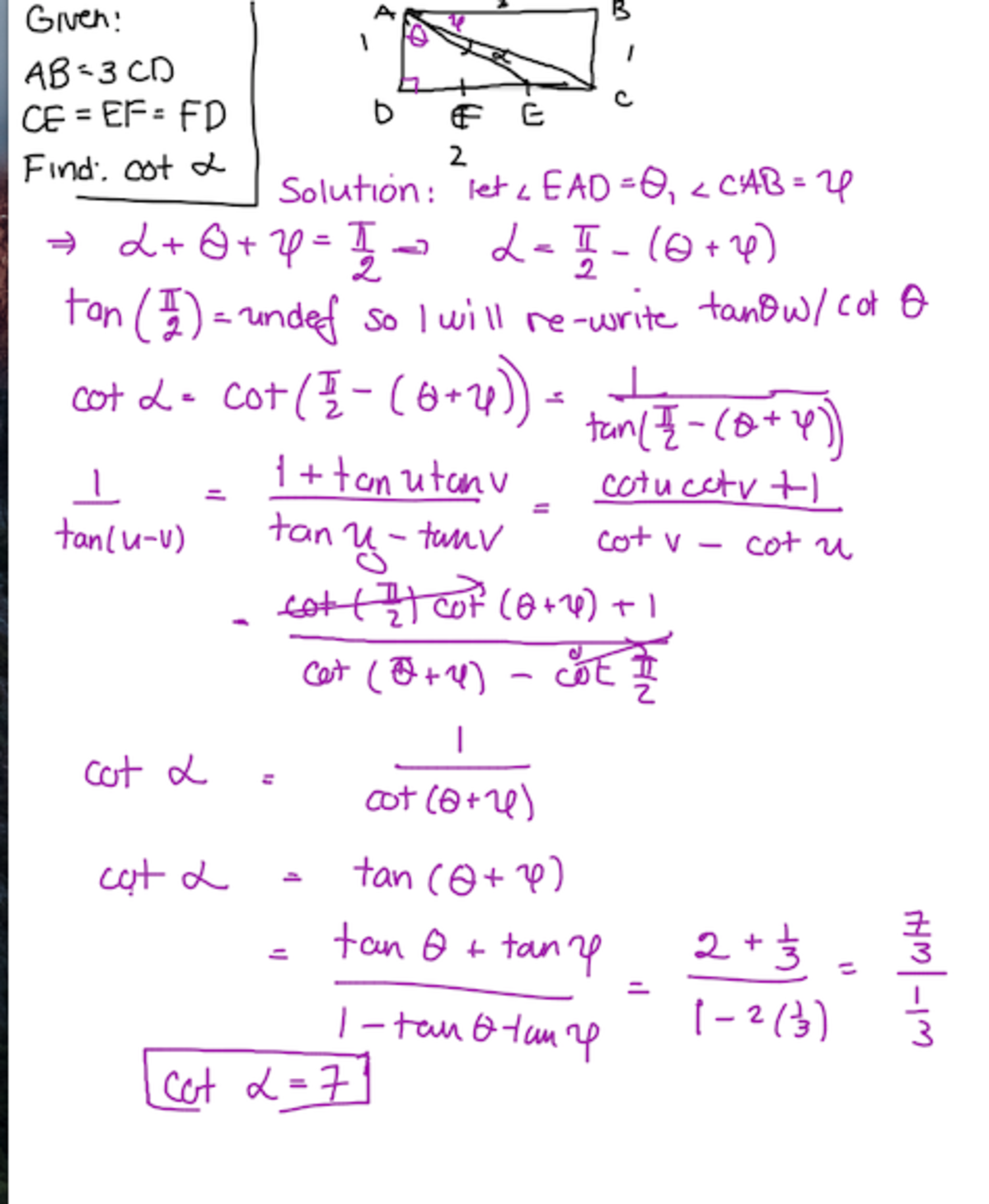Reducing The Exposure
Let A B C D be a rectangle such that A B = 3 A D . If E and F are on C D with C E = E F = F D , find cot ( ∠ C A E ) .
The answer is 7.
This section requires Javascript.
You are seeing this because something didn't load right. We suggest you, (a) try
refreshing the page, (b) enabling javascript if it is disabled on your browser and,
finally, (c)
loading the
non-javascript version of this page
. We're sorry about the hassle.
6 solutions
Assume without loss of generality A D is 1. Then D C is 3, and E C is 1. Note this implies by the Pythagorean Thorem E Q = 1 2 + 3 2 = 1 0 .

Drop a perpendicular from E to A C , and call new point Q . △ A D C ∼ △ E Q C by AA similarity. This implies the ratio E Q / A D = E C / A C . Substituting values, E Q = 1 / 1 0 .
Since △ A D G ∼ △ E Q G , Q C is 3 E Q so Q C = 3 / 1 0 .
By subtraction, A Q = A C − Q C = 1 0 − 3 1 0 = 7 / 1 0 .
Thus the cotangent of ∠ C A E is E Q A Q = 1 / 1 0 7 / 1 0 = 7 .
Using Sine Rule (Law of Sines) we know that E C sin ( ∠ C A E ) = A E sin ( ∠ E C A ) .
Now, using the definition of sine and the Pythagorean theorem , we get that E C sin ( ∠ C A E ) = 5 E C 2 sin ( ∠ E C A ) ⇒ sin ( ∠ C A E ) = 5 sin ( ∠ E C A ) .
Again using the definition of sine, we get that sin ( ∠ A C E ) = A C A D = 1 0 1 ⇒ sin ( ∠ C A E ) = 5 0 1 .
Now using the fact that cot x = sin x cos x and the fact that cos x = 1 − sin 2 x , we get cot ( ∠ C A E ) = 7 .
- Thinking of A as the origin of a cartesian plane, we have E = ( 4 , − 2 ) and C = ( 6 , − 2 ) .
- Let A E = 4 ı ^ − 2 ȷ ^ and A C = 6 ı ^ − 2 ȷ ^ .
- Using the equality from the dot product* of them it develops to ∣ ∣ ∣ A E ∣ ∣ ∣ ⋅ ∣ ∣ ∣ A C ∣ ∣ ∣ cos α = 6 ⋅ 4 + ( − 2 ⋅ − 2 ) .
- Calculating the moduli of the both vectors is simple and then we have 2 0 ⋅ 4 0 cos α = 2 8 ⟹ cos α = 1 0 7 2 .
- By Trigonometry we know that cos x 1 = tan 2 x + 1 , which ultimately leads to cos 2 α = 1 0 0 4 9 ⋅ 2 ⟹ cos 2 α − 1 = 1 0 0 4 9 ⋅ 2 − 1 = tan 2 α ⟹ tan α = 7 1
-
tan α = cot α 1 ⟹ cot α = 7
Let x = A D , from the given information it follows that A B = 3 x , E C = x , D E = 2 x ⟹
A C = 1 0 x , A E = 5 x
The law of cosines ⟹ 1 = 1 5 − 1 0 2 c o s α ⟹ c o s α = 5 2 7
⟹ c o t α = 7 .

Let ∠ C A D = P , ∠ E A D = Q , then cot ( ∠ C A E ) = cot ( α ) = cot ( P − Q ) .
Let A D = k , then D F = F E + E C = A D = k .
So, tan ( P ) = A D D C = k k + k + k = 3 , and tan ( Q ) = A D D E = k k + k = 2 .
Using the difference formula ,, tan ( P − Q ) = 1 + tan P tan Q tan P − tan Q = 1 + 3 ⋅ 2 3 − 2 = 7 1 .
Hence, cot ( P − Q ) = tan ( P − Q ) 1 = 7 .